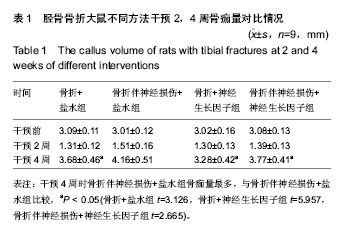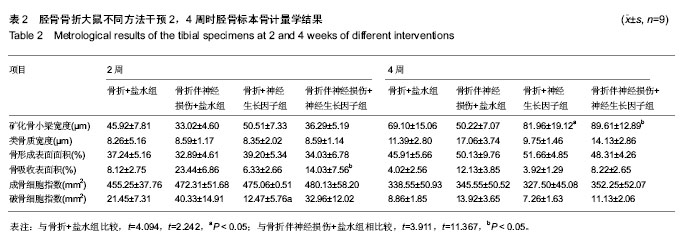| [1] Mano JF, Reis RL.Osteochondral defects: present situationand tissue engineering approaches.J Tissue Eng Regen Med.2007;1(4):261-273.
[2] Swieszkowski W,Tuan BH,Kurzydlowski KJ,et al.Repair andregeneration of osteochondral defects in the articular joints.Biomol Eng.2007;24(5):489-495.
[3] Oldershaw RA. Cell sources for the regeneration of articularcartilage: the past, the horizon and the future. Int J Exp Pathol.2012;93(6):389-400.
[4] Goldring MB, Otero M, Plumb DA,et al.Roles of inflammatory and anabolic cytokines in cartilage metabolism: signals and multiple effectors converge upon MMP-13 regulation in osteoarthritis. Eur Cell Mater.2011;21:202-220.
[5] Leong DJ, Hardin JA, Cobelli NJ, et al.Mechanotransduction and cartilage integrity. Ann N Y Acad Sci.2011;1240:32-37.
[6] Rosa SC, Rufino AT, Judas FM,et al.Role of glucose as a modulator of anabolic and catabolic gene expression in normal and osteoarthritic human chondrocytes. J Cell Biochem. 2011;112(10):2813-2824.
[7] Ito S, Sato M, Yamato M,et al.Repair of articular cartilage defect with layered chondrocyte sheets and cultured synovialcells. Biomaterials.2012;33(21):5278-5286.
[8] Detterline AJ,Goldstein JL,Rue JP,et al.Evaluation and treatment of osteochondritis dissecans lesions of the knee. J Knee Surg.2008;21(2):106-115.
[9] Kreuz PC, Steinwachs MR, Erggelet C,et al.Results after microfracture of full-thickness chondral defects in different compartments in the knee. Osteoarthr Cartil.2006;14:1119-1125.
[10] Redman SN, Oldfield SF, Archer CW.Current strategies for articular cartilage repair. Eur Cell Mater.2005;9:23-32.
[11] Bentley G, Biant LC, Carrington RW, et al. A prospective, randomised comparison of autologous chondrocyte implantation versus mosaicplasty for osteochondral defects in the knee.J Bone Joint Surg Br.2003;85:223-230.
[12] Hunziker EB.Articular cartilage repair: basic science and clinical progress. A review of the current status and prospects. Osteoarthr Cartil.2002;10:432-463.
[13] Grande DA,Sgaglione NA.Regenerative medicine: self-directed articular resurfacing: a new paradigm? Nat Rev Rheumatol.2010;6(12):677-678.
[14] Panseri S, Russo A, Cunha C, et al.Osteochondral tissueengineering approaches for articular cartilage andsubchondral bone regeneration.Knee Surg Sports Traumatol Arthrosc. 2012;20(6):1182-1191.
[15] 狄鸥,杨吉祥,赵奇峰,等.自体骨膜延迟游离移植修复关节软骨缺损[J].骨与关节损伤杂志,2012,12(2):154-156.
[16] 李德达.李进明.尚天裕.关节软骨愈合和再生研究的现代进展[J].中国骨伤,2011,14(8):497-500.
[17] Kang SW,Bada LP,Kang CS,et al.Articular cartilage regeneration with microfracture and hyaluronic acid. Biotechnol Lett.2012;30(3):435-439.
[18] Langer EB, Rosenberg LC. Repair of partial-thickness defects in articular cartilage: cell recruitment from the synovial membrane.J Bone Joint Surg Am. 1996;78(5):721-733.
[19] Wohl G, Goplen G, Cheah HK, et al.Mechanical integrity of subchondral bone in osteochondral autografts and allografts. Can J Surg.2010;41(3) : 228-331.
[20] Kandel RA, Gross A, Aubin P, et al.Hist opathology of failedost eoarticular shell allografts.Clin Orthop.2010;197: 103-110.
[21] Makris EA, Gomoll AH, Malizos KN,et al. Repair and tissue engineering techniques for articular cartilage.Nat Rev Rheumatol. 2015;11(1):21-34.
[22] Berninger MT, Wexel G, Rummeny EJ, et al. Treatment of osteochondral defects in the rabbit's knee joint by implantation of allogeneic mesenchymal stem cells in fibrin clots.J Vis Exp. 2013 May 21.
[23] Musumeci G, Castrogiovanni P, Leonardi R, et al.New perspectives for articular cartilage repair treatment through tissue engineering: A contemporary review.World J Orthop. 2014; 5(2):80-88.
[24] Ringe J, Burmester GR, Sittinger M, et al. Regenerative medicine in rheumatic disease-progress in tissue engineering.Nat Rev Rheumatol. 2012; 8(8):493-498.
[25] McNickle AG, Provencher MT, Cole BJ. et al.Overview of existing cartilage repair technology.Sports Med Arthrosc. 2008;16(4):196-201.
[26] Minas T.A primer in cartilage repair.J Bone Joint Surg Br. 2012;94(11 Suppl A):141-146.
[27] Ye K, Di Bella C, Myers DE, et al. The osteochondral dilemma: review of current management and future trends.ANZ J Surg. 2014;84(4):211-217. |


.jpg)